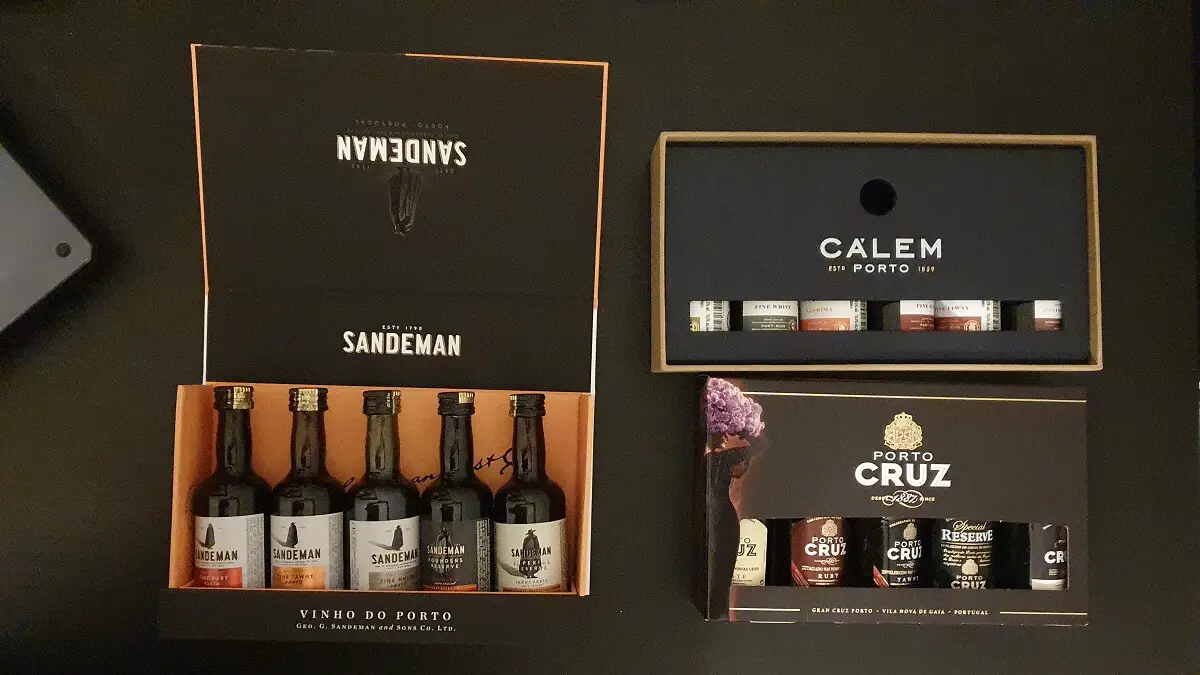
Port wine one of the most famous sweet fortified wines in the world. In order to produce it, a local brandy is added before the end of fermentation. The result is an aperitif or a dessert wine, sweet and quite strong. A visit to Portugal would be incomplete without tasting at least one glass of port wine.
READ ALSO: 25 STUNNING PLACES TO VISIT IN PORTUGAL (+MAP)
Where is port wine made?
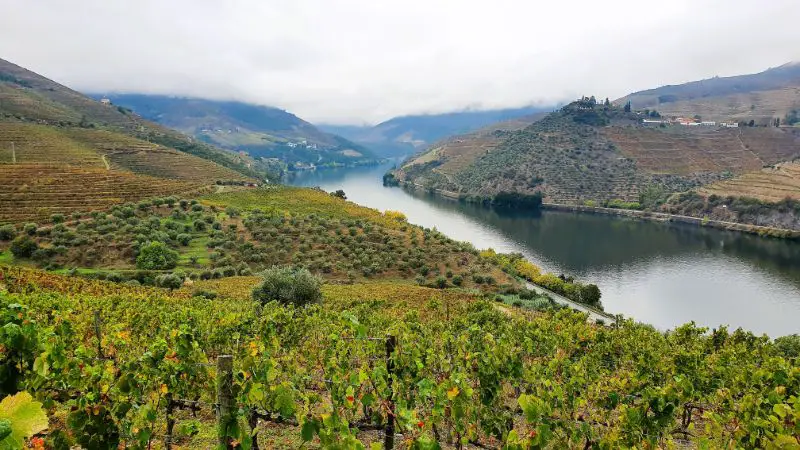
Port wine is made exclusively in and around the Douro Valley in Portugal. And is unsurprisingly the country’s most popular export. The wine is produced in the villages, but it is kept in Vila Nova da Gaia, where most wine producers have their cellars. Some of the most famous ones are Taylor’s, Sandeman, Fonseca, Graham’s or Croft. Similar drinks produced in other regions can not be sold under this name, as per EU laws. A seal on the bottles might also certify the provenance of the wine.
READ ALSO: DOURO VALLEY: BEST THINGS TO DO IN PORTUGAL’S FAMOUS WINE REGION
Where can you learn more about it?
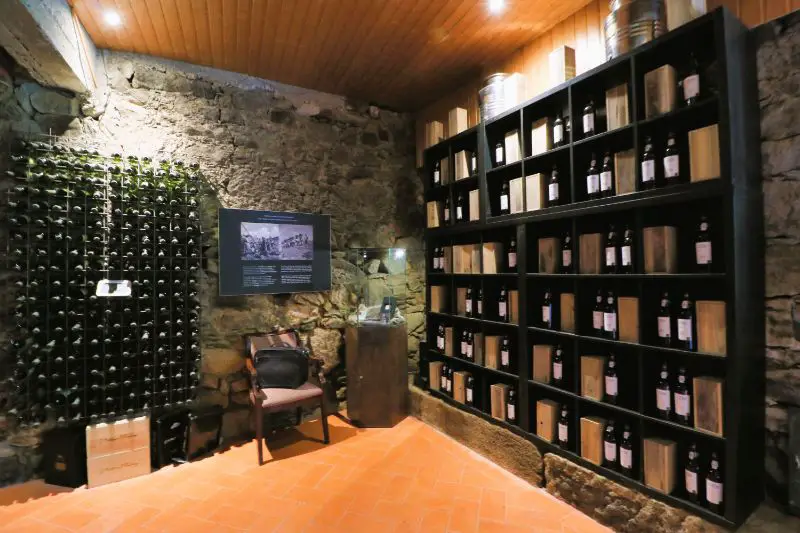
Now, if you don’t have the time or appetite to read this article and would like a more practical approach, here are some places were you can learn everything about port wine, right on site, in Porto or as a day trip to Douro Valley from Porto:
- Porto Cruz in Porto – this center combines wine tastings with videos about port wine and. On the roof, there’s a bar with exceptional views over Porto side where you can also enjoy a port cocktail.
- World of Wine (WOW)– there you can embark on a voyage of discovery to learn how wine is made and taste a few glasses.
- Wine cellars in Vila Nova da Gaia – Cálem, Graham’s, Cockburn’s, Burmester, Pocas or Taylor’s are some popular choices
- Wine tour in Porto – this one that takes tourists to three different cellars and the guide provides invaluable information
- Full-day tour of the Douro Valley from Porto
READ ALSO: 30 THINGS TO DO IN PORTO IN THREE DAYS, PORTUGAL
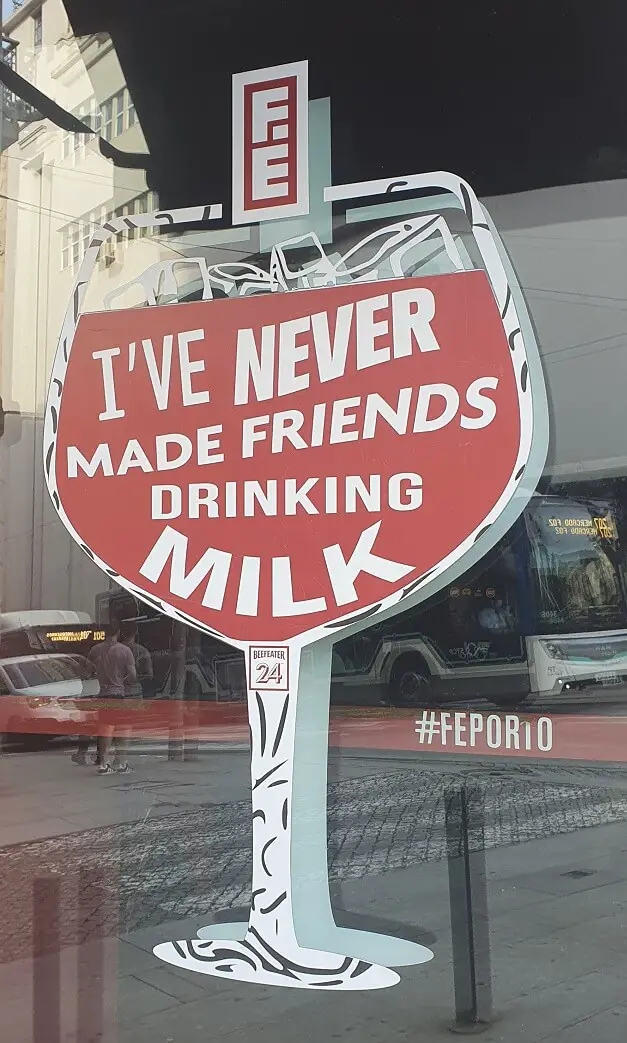
What is the history of port wine?
The first vineyards in the Douro valley were cultivated by the romans. These are now part of the UNESCO World Heritage. After the romans left, the local monasteries continued the tradition, but the recipe they used to process the grapes remains unknown to the modern world. Port wine, as we know it today, started to be produced in the Douro region in the 17th century.
How is port wine made?

Traditionally, after the harvest, grapes were stomped by people with their feet. This way, the seeds were not crushed. Afterwards it fermented like any other wine. Today, most Port wineries use mechanical “feet” in place of manual labor. However, a few producers still follow the old way and tourists can even take part in the process.
After the war between France and Great Britain, the later started to import wine from Portugal. However, it reached the remote islands already sour. The Englishmen wanted to get wine, not vinegar. Thus, the Portuguese people were forced to find a solution in order to stop fermentation.
They started to add aguardiente, a local brandy which names means fire water because it contains 77% alcohol. It helped to stop the fermentation. At the same time, the side effect was a sweet and very strong wine. Basically, doing this created Port wine. The English people quickly fell in love with. They started to come to Douro Valley in order to study and produce it, hence the cellars with English names: Taylor’s, Graham’s, Cockburn, Dow or Croft.
READ ALSO: TOP 10 DAY TRIPS FROM PORTO FOR CITIES, WINE, NATURE AND MORE
Why is it stored in Vila Nova da Gaia and not in Porto?
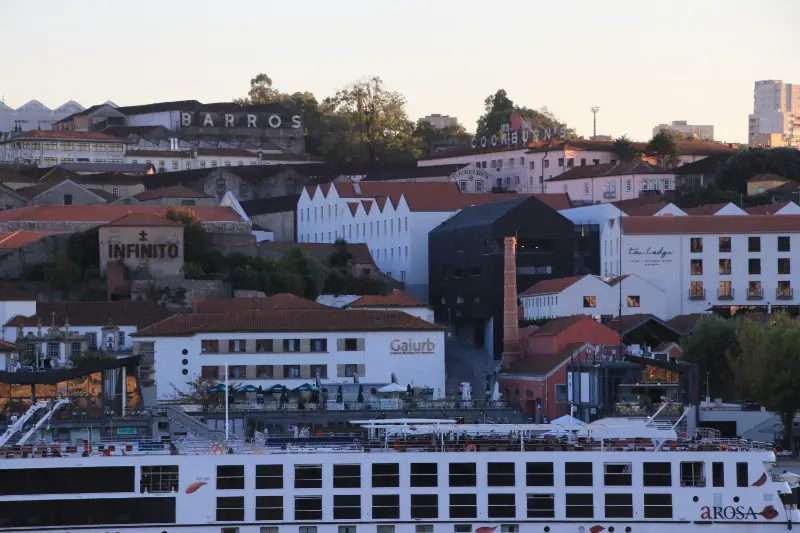
After being produced in Douro Valley, in order to be transported, the wine need to be closer to the ocean. Porto was the most obvious choice, as the Douro river was a natural means of transportation. However, the taxes were pretty high, as Porto inhabitants had to pay taxes to both the state and the church. Also, Porto had already been mostly built up and there was not much space left.
So wine makers decided to establish their cellars on the opposite side, in Gaia. Land was plenty and taxes were paid only to the state. Nowadays, the tradition is still kept, on one hand because of commodity, on the other because there is more humidity and shadow on that side. Natural conditions are better for controlling port aging.
The port wine was transported from Douro Valley to Vila Nova da Gaia by traditional rabello boats, built specifically to survive the strong streams from the vineyards to the cellars in Gaia. Later on, the barrels were transported by train and now by trucks.
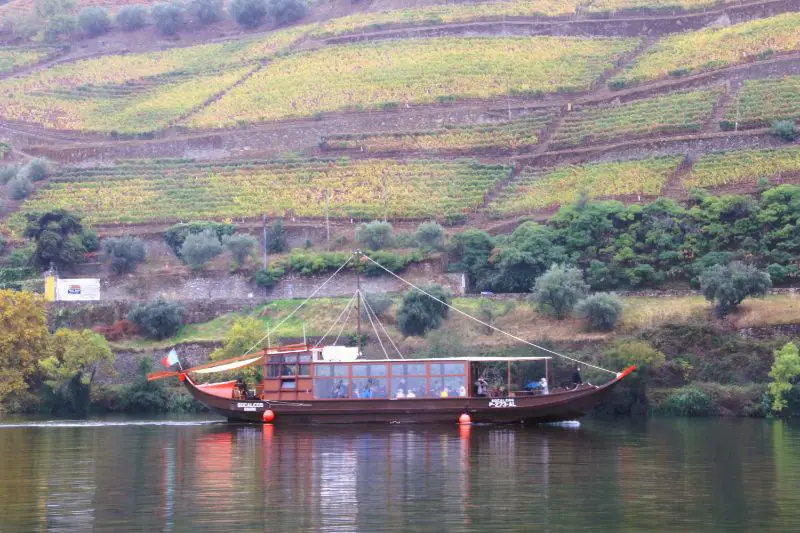
What are the port wine regulations?
In 1755, there was a huge earthquake and tsunami which almost destroyed Lisbon. In order to rebuild the city, the Marquis de Pombal needed money and port wine export was a good source for it. However, the locals had started to add water or sugar to the wine to increase their profit. This way, larger quantities could be obtained, but of a lower quality. As this wasn’t good in terms of state revenue, the marquis decided to enforce rules in order to maintain the quality of the wine.
He marked the vineyards that could produce port wine and said that only the vineyards older than 5 years could sell their product as port wine. The beverage had to have between 18 and 22 degrees and be made of at least 3 types of grapes. This way, in 1756, the production of port was regulated and demarcated. Douro Valley became one of the first wine regions in the world with a legal boundary.
READ ALSO: WHAT IS PORTUGAL FAMOUS FOR?
What are the different types of port wine?
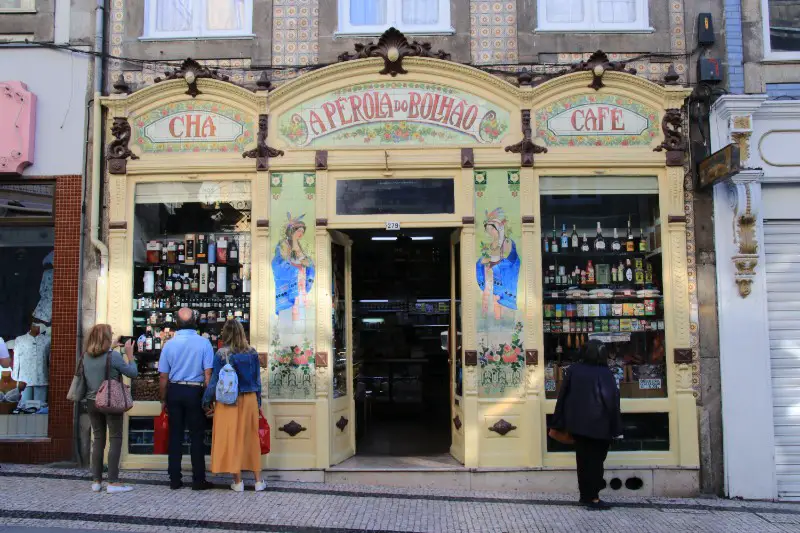
If you start looking for port wine, you’ll quickly notice that there are in fact several types: tawny, ruby, white, dry, pink, late-bottled vintage (LBV) etc. Each of them has its own characteristics and taste. Here’s a brief presentation of the main ones:
- Ruby Port – this is a deeply red-colored port made out of red grapes like Turiga Nacional, Turiga Franca and Tinto Roriz. Commonly identified flavors are berries, chocolate and cinnamon.
- White Port – this is a golden-colored wine made out of grapes like Rabigato, Malvasia, and Viosinho. The most recognizable tasting notes are those of citrus, apricot and apple.
- Tawny Port – this caramel-colored port is offered in most places, from touristic fado shows to boats and cellars. Tawny is made out of the same grapes as the ruby port. It is sweeter and and combines the flavors of caramel, nuts and dried fruit. Its age varies from 2 to 40 years.
- Rosé Port – this is the newest addition to the port wine family and my favorite. It’s not as sweet as the tawny and has milder flavors of berries, cherries and other fruit.
- Vintage Port – it can have any color and has the highest quality.
- LBV Port – this basically means late bottled vintage.

How to serve port wine?
Port wine, despite its name, is not really a wine, but a liquor. It’s poured in smaller quantities and tinier glasses than traditional wine. Even the dry still contain large quantities of sugar. It is better served as an aperitif drink or dessert wine. English-speaking countries usually consume it after dinner with treats like chocolate, cheese, roasted nuts or dried fruits. It can also replace or accompany a dessert made with chocolate or caramel.
READ ALSO: 35 THINGS TO DO IN LISBON IN THREE DAYS
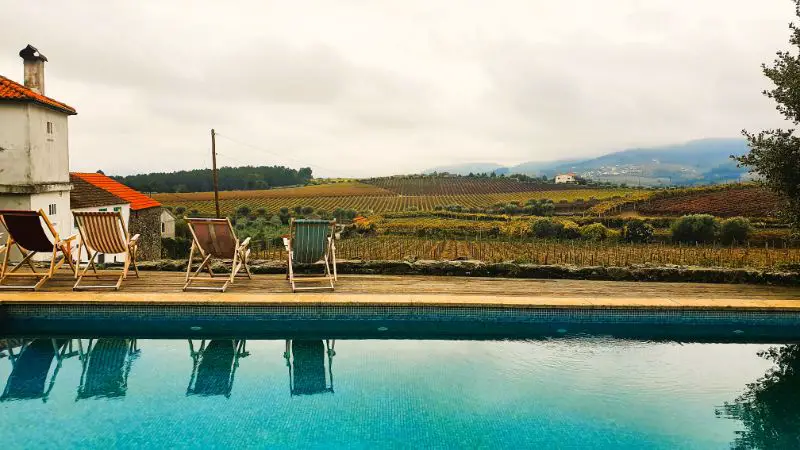
How can you recognize port wine?
While at a cellar in Douro Valley, the guide told us that tourists are often tricked in Portugal and are given a combination of wines or something that’s similar to port, but not quite. She made sure none of us would leave the cellar without being able to recognize the real thing and I’ll transfer this secret to you.
Tip: If you want to make sure what you have in your glass is port, take a white napkin and put the glass between it and a source of light. It should only have one reflex, not several.

This was it!
This is out quick guide to port wine. Of course, the best place to learn about it and taste it are Douro Valley and Vila Nova da Gaia. These are also the regions that imprint their characteristics on it. A visit to Douro Valley is one of the best day trips one can do from Porto, even if you’re not usually a huge wine fan. The landscapes are spectacular and there’s more than one reason for the Douro Valley area to be recognized as an UNESCO World Heritage site.
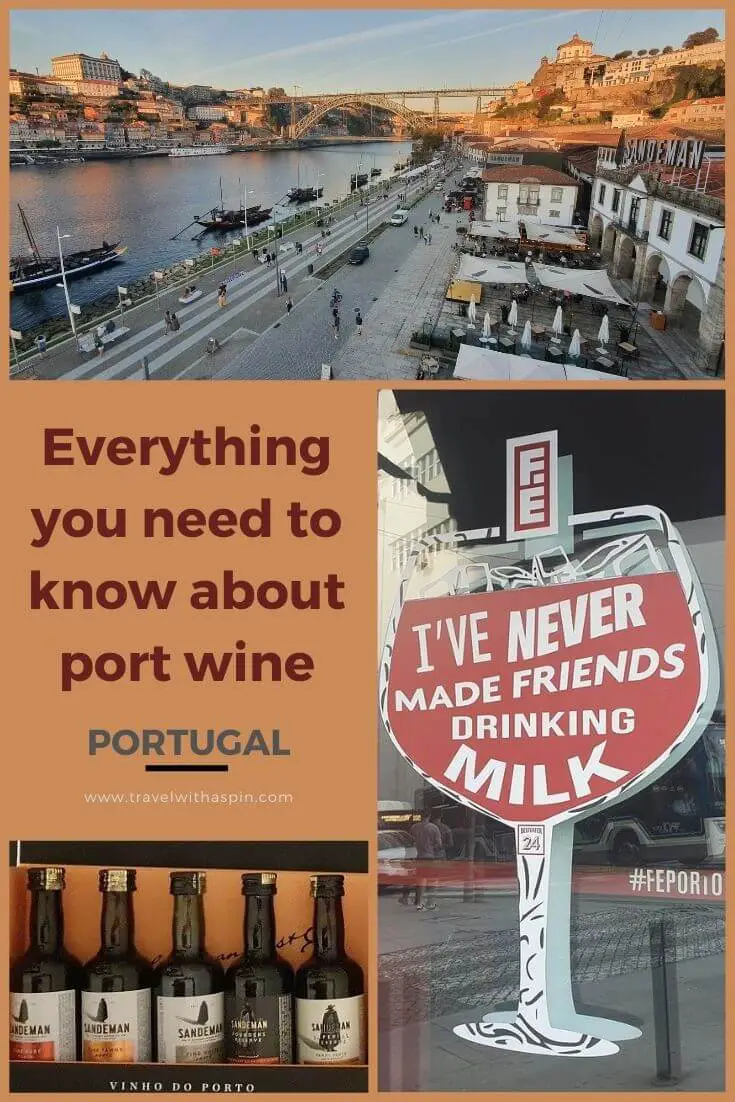
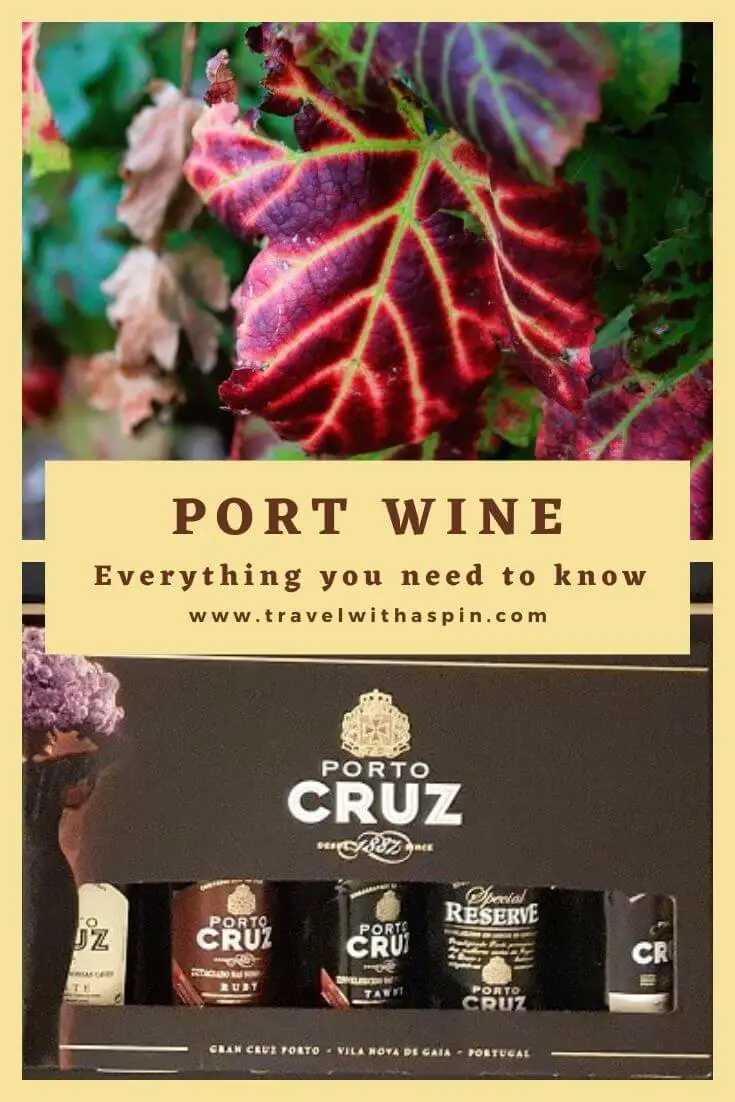
Travel With A Spin contains affiliate links. If you make a purchase through these links, I will earn a commission at no extra cost to you. Thanks for reading!
